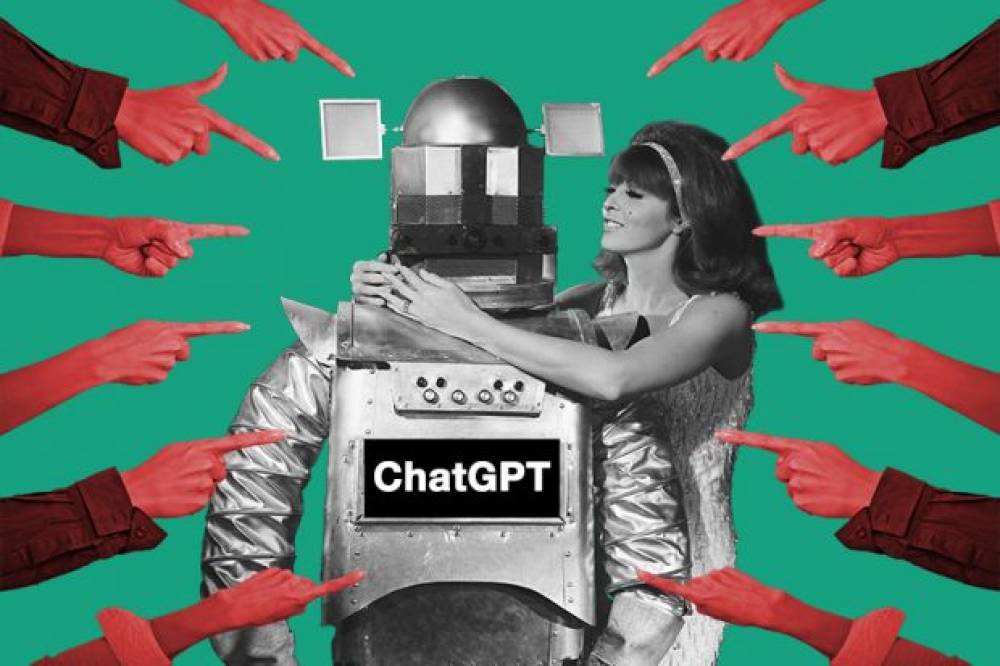
Xem ChatGPT chỉ là công cụ đạo văn là sai lầm: AI có thể trở thành đối tác nghiên cứu sáng tạo
-
Nhiều cảnh báo gần đây về AI: Mustafa Suleyman (Microsoft) gọi người dùng thụ động là “ảo tưởng nguy hiểm”; MIT công bố nghiên cứu cho rằng dùng LLM thường xuyên có thể làm giảm 47% hoạt động não bộ; một số học giả gọi AI là hình thức đạo văn mới.
-
Agnieszka Piotrowska cho rằng cách nhìn này quá hẹp, vì giả định AI chỉ được dùng thụ động. Thực tế, nếu dùng có phê phán, LLM có thể trở thành “đối thoại viên” kích thích tư duy.
-
Bà thừa nhận đã thấy những lạm dụng: bài báo với trích dẫn giả, văn phong sáo rỗng. Nhưng bản thân bà sử dụng AI để nâng cao sự sáng tạo và tính chặt chẽ, không phải để thay thế tư duy.
-
Cảnh báo: cấm đoán AI trong học thuật có thể tạo ra bí mật và xấu hổ, dẫn đến gian lận nhiều hơn. Giải pháp là minh bạch, hướng dẫn sinh viên dùng AI như công cụ khám phá, không phải lối tắt.
-
Với tư cách nhà làm phim, Piotrowska coi AI giống như công nghệ điện ảnh – không thể làm phim nếu thiếu công cụ. Bà sẵn sàng dùng gợi ý từ AI rồi chấp nhận hoặc loại bỏ.
-
Trong cuốn sách sắp ra mắt “AI Intimacy and Psychoanalysis”, bà phân tích mối quan hệ văn hóa – tâm lý với AI, cho rằng sự bất an xuất phát từ việc AI chiếm lấy “không gian đối thoại”, vốn là nền tảng của giáo dục.
-
Ví dụ: nghiên cứu sinh có thể dùng AI để tìm phản biện cho văn bản; sinh viên môi trường có thể mô phỏng tranh luận giữa các bên liên quan. Đây không phải sao chép mà là công cụ phát triển lập luận.
-
Lịch sử từng chứng kiến hoảng loạn với công cụ mới: Plato lo chữ viết phá hỏng trí nhớ; máy in bị cáo buộc làm hư hỏng tâm hồn. Tương tự, AI đang thay đổi vị trí tri thức.
-
Câu chuyện của Luke Chang (Dartmouth): ông dùng ChatGPT thảo luận nghiên cứu trên đường về nhà, thấy niềm vui và sự sáng tạo tăng lên.
📌 Tranh cãi về ChatGPT phản ánh nỗi sợ cũ với công nghệ mới: từ chữ viết đến máy in. MIT cảnh báo suy giảm não bộ 47% bị nghi ngờ, trong khi thực tế AI đã được nhiều học giả dùng như công cụ “đồng tư duy”. Piotrowska khẳng định không nên cấm đoán mà cần hướng dẫn sử dụng minh bạch, có phê phán. AI không chỉ là máy tìm kiếm, mà đang trở thành đối tác sáng tạo, mở rộng khả năng nghiên cứu và trí tuệ.
https://www.timeshighereducation.com/blog/dismissing-academic-merits-chatgpt-intellectually-dishonest
Dismissing the academic merits of ChatGPT is intellectually dishonest
Portraying ChatGPT as a playground for plagiarists is a timid response to AI’s ability to enhance research in all subjects, argues Agnieszka Piotrowska
Published on September 3, 2025
Last updated September 3, 2025
Woman hugging a robot while accusing fingers point at them. To illustrate that despite warnings against the use of AI, it has an ability to enhance research in all subjects.
Source: Getty Images/iStock montage
The warnings are coming thick and fast: beware the “dangerous delusions” of passive artificial intelligence (AI) users, says Microsoft’s AI chief Mustafa Suleyman; Massachusetts Institute of Technology (MIT) researchers claim cognitive decline; and academics cry plagiarism.
That recent MIT study, for example, warns that regular users of large language models (LLMs) may face a 47 per cent decline in brain activity (a statement contested but widely quoted), as though conversing with a machine were equivalent to handing over your mind in a zip file. Elsewhere, some scholars now claim that using AI in any academic work, including research, amounts to a new form of plagiarism. The message is blunt: if you use AI, you are cheating, and your thinking will suffer.
This framing is far too narrow. It assumes that AI can only be used passively, as a shortcut for lazy “copy-and-paste” writing. In truth, many of us are exploring far more creative and dialogic uses of AI in higher education. LLMs, when used critically, can function not as ghostwriters, but as collaborators, a kind of provocateur that sharpens our thinking and challenges our assumptions.
I see this tension every day. As a peer reviewer, I’ve recently flagged papers riddled with fabricated references and superficial phrasing, unmistakable signs of careless AI use. But I also use AI daily in my own research as it can support rigour and creativity rather than erode it. It all depends on the approach: are we outsourcing thought, or using these tools to think better?
This distinction matters more than ever. When universities respond to AI with blanket suspicion, we risk driving students into secrecy – the very behaviour we claim to abhor. Prohibition creates shame, and shame makes cheats.
But if we create spaces for transparency and critique, AI can be integrated as a tool of intellectual curiosity rather than submission. Clearly it is of vital importance that students understand how crucial it is to do one’s own research, one’s own reading and writing, and that the more you know, the more you can have intellectual fun with AI.
This is not just theoretical for me. It is possible my life as a film-maker has prepared me for working with machines in a creative way – you cannot make any film whatever without technology. I have also always written both academically and creatively all my life so I am not anxious about collaborating with AI, and using its suggestions or throwing them away.
It is also a fun way to think, and to write. My forthcoming book AI Intimacy and Psychoanalysis (Routledge, later this year) explores the cultural and psychological dimensions of our evolving relationship with language models. What disturbs us, I argue, is not just the fear of plagiarism but the uncanny feeling that AI now occupies the symbolic space of dialogue itself. It is no longer just a tool. It speaks. And in doing so, it unsettles the traditional structures of teaching and authority.
This discomfort is understandable but it’s no excuse for intellectual timidity. Consider a few possibilities: a doctoral student in postcolonial theory might ask an LLM for counter-readings of a text, not to plagiarise them, but to refine their own position. An undergraduate in environmental policy might use AI to simulate stakeholder debates, gaining insight into opposing arguments. In my own practice, I often run my drafts past a number of LLMs for critical feedback. They do offer ideas to consider and ask challenging questions, if they are set up and encouraged to do so. Also, when an LLM misinterprets something, it often means a human reader might too. These are not shortcuts. They are tools for precision and creativity.
Every new technology has sparked anxiety: the calculator, the internet, the word processor. But history has shown that what matters is not the technology itself, but how we use it. For me this is also a question of educational freedom. When I last wrote for Times Higher Education, it was about the state of academic freedom in Poland. Now, the stakes are different but no less urgent. We are being asked to think with machines.
This shift is already happening. A recent New Yorker piece profiles Luke Chang, an academic at Dartmouth, who spent a long drive home from the lab discussing his research problem with ChatGPT. Years ago, he might have mused on the problem alone. This time, he brainstormed with the machine, explaining, probing, listening as it suggested refinements. It wasn’t just “using” a tool. It was co-thinking. “It is a delight. I feel like I’m accelerating with less time,” he told the writer. “I’m accelerating my learning and improving my creativity...enjoying my work in a way I haven’t in a while.”
The language is telling: delight, acceleration, joy. Not words typically associated with moral panic. This is the tension we face in higher education: AI is here, for us to collaborate with. The question isn’t whether this will happen. It is already happening. The question is whether we meet it with suspicion or pedagogy.
Historically, moral panics have always accompanied new technologies of thought. Plato warned that writing would erode memory and produce only the illusion of wisdom. The printing press was accused of corrupting the soul. The real anxiety, then and now, is symbolic: a fear that the locus of knowledge might shift, that dialogue might leave the room.
AI reopens the very question Plato feared: can wisdom survive its separation from the speaker? We are no longer just reading. We are talking to the text.
Today, that dialogue might sometimes take place between a researcher and a machine on a drive through New Hampshire. If we’re honest, we know this already. AI is not just a search engine. It’s becoming a partner in the form of thought.
Our job now is to ensure that this partnership is conscious, ethical and transformative, not left to develop in silence or, worse, fear.
Thảo luận
Follow Us
Tin phổ biến



